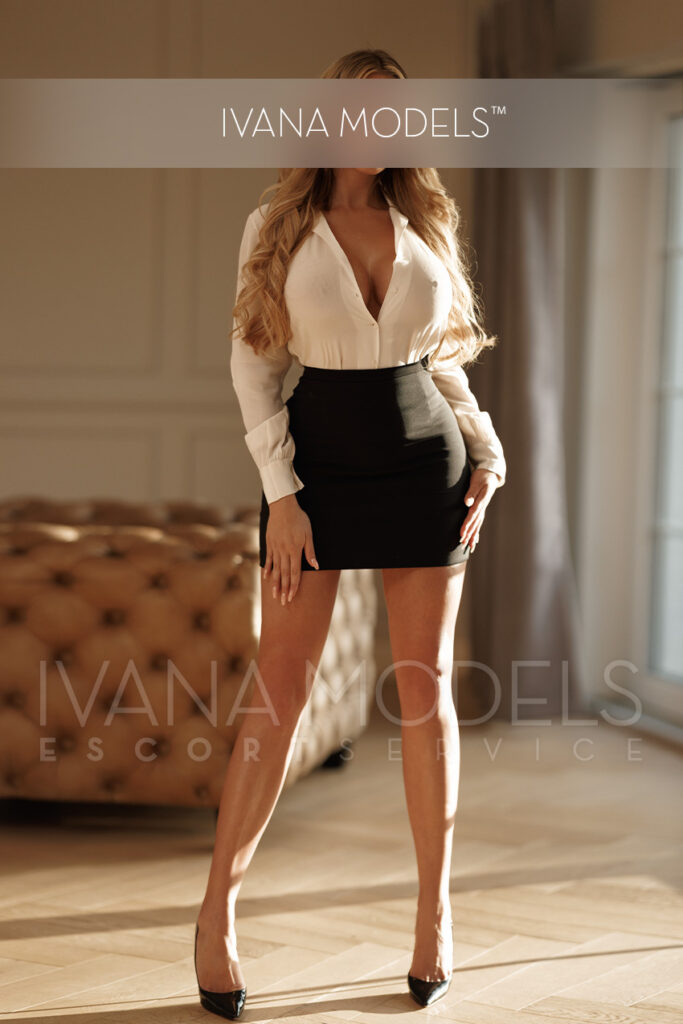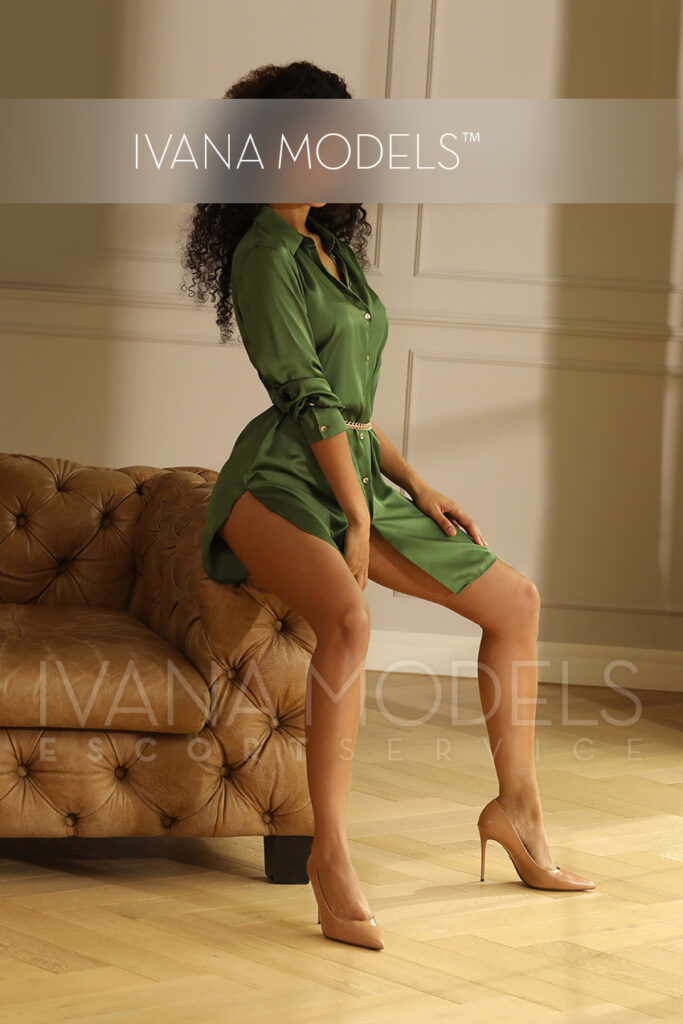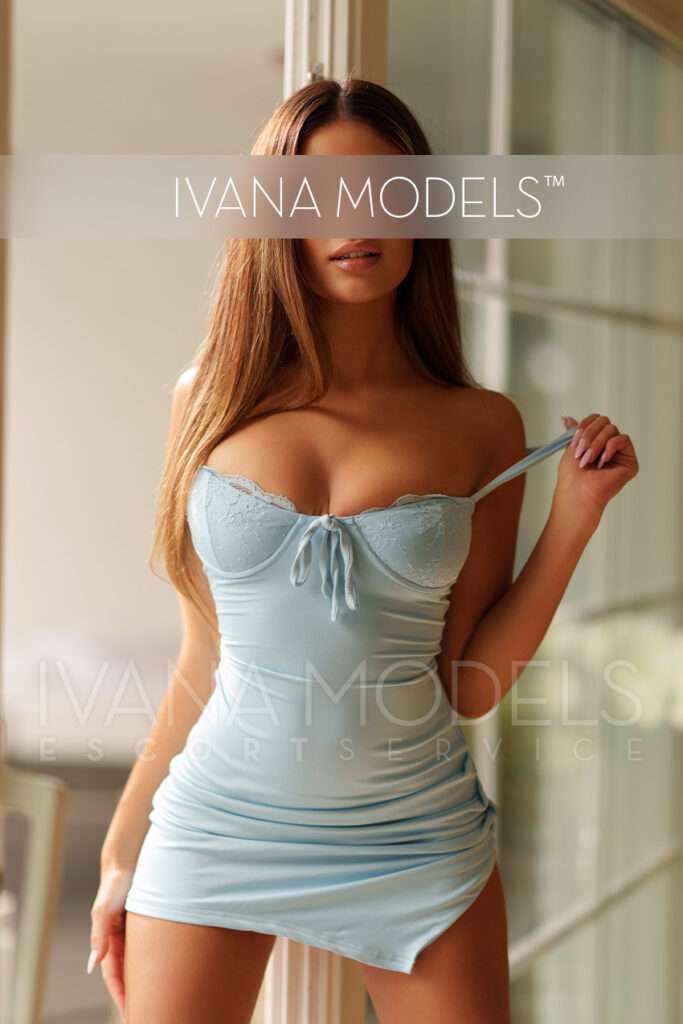Introduction to Curvy Figures
Definition of “Curvy” in Modern Context
The term “curvy” refers to a body type with a well-defined waist and fuller bust, hips, or thighs. It signifies a shape that includes bends and contours rather than a straight or angular physique. In contemporary society, “curvy” is often used as an inclusive and positive term to describe various body types that celebrate natural figures. It’s important to note that “curvy” is a subjective term and can mean different things to different people, reflecting a range of body sizes and shapes.
Historical Perspective on Curvy Figures
Historically, the appreciation of curvy figures has fluctuated significantly across cultures and eras. In many periods, such as during the Renaissance, curvaceous bodies were idealized in art and considered symbols of health and fertility. The 20th and early 21st centuries have seen varied beauty standards, with some eras glorifying slimmer figures and others, like the present day, embracing a more diverse range of body types. This historical context helps us understand how perceptions of beauty and body shape are influenced by cultural and societal factors.
Embracing Body Diversity
In recent years, there’s been a positive shift towards embracing body diversity and recognizing that beauty comes in all shapes and sizes. This movement advocates for the acceptance of all body types, including curvy figures, and challenges the narrow beauty standards often portrayed in media. Embracing body diversity involves celebrating each individual’s natural body, promoting self-love, and recognizing the worth and beauty in all forms. It’s about creating an inclusive environment where everyone feels represented and valued.
Terminology and Descriptions
Key Terms Related to Body Shape and Size
- Hourglass: A body shape characterized by a well-defined waist and roughly equal bust and hip measurements.
- Pear-Shaped: This shape features wider hips and thighs compared to a smaller bust and waist.
- Apple-Shaped: Typically having a broader shoulder and bust compared to the hips, with less definition between waist and hips.
- Full-Figured: A term often used to describe individuals who are more rounded or have a fuller body type, typically associated with plus sizes.
- Athletic: Usually refers to a more muscular build with less body fat, often with a more rectangular body shape.
Understanding these terms helps individuals accurately describe and embrace their body type, leading to better choices in fashion, health, and personal style.
Understanding Body Positivity and Self-Acceptance
Body positivity is a movement that encourages individuals to love and accept their body as it is, regardless of societal beauty standards. It promotes the idea that all bodies are worthy of self-love, respect, and dignity. This ideology is crucial for mental health, as it combats the negative impact of body shaming and promotes overall well-being. Self-acceptance is a journey that involves recognizing the beauty in one’s natural body and rejecting unrealistic and harmful beauty norms.
Language Sensitivity and Empowerment
The words we use to describe bodies can significantly impact how individuals perceive themselves and others. It’s important to use language that is respectful, inclusive, and empowering. Avoiding terms that body shame or judge people based on size or shape is crucial. Instead, focus on words that celebrate diversity and individuality. Empowering language in the context of body image encourages people to feel confident and validates their worth beyond physical appearance.
Fashion and Styling for Curvy Figures
Dressing for Different Body Types
Understanding your body type is the first step in mastering personal style. Here are some general tips:
- Hourglass: Emphasize your waist and balance your bust and hips with fitted clothing that highlights your proportion.
- Pear-Shaped: Draw attention upward with bright tops or detailed necklines, and opt for A-line skirts or flared pants to balance the lower body.
- Apple-Shaped: Focus on elongating the torso with v-necks and monochromatic looks, and consider flowy tops or tunics to create a balanced silhouette.
- Full-Figured: Look for tailored pieces that fit well; wrap dresses, high-waisted skirts, and structured jackets can be particularly flattering.
- Athletic: Create curves with ruffles, peplums, and details that add volume to the bust and hips.
Each individual’s style will vary, and these are starting points to inspire personal exploration and confidence in fashion choices.
Tips and Tricks for Accentuating Curves
Belts and Waist Cinchers: Utilize these to emphasize the waist, creating a more defined silhouette.
Layering: Use layers to balance proportions or add volume where desired.
Texture and Pattern: Incorporate these elements to highlight or downplay certain areas; bold prints can attract attention, while darker, smoother fabrics can minimize.
Understanding Fit and Comfort
Know Your Measurements: Accurate measurements ensure better fitting clothes, leading to a more polished look.
Quality over Quantity: Invest in pieces that fit well and are made from comfortable, durable materials.
Tailoring: Don’t hesitate to get clothes altered for a perfect fit—this can make a significant difference in how you look and feel.
Fashion for curvy figures is about celebrating and enhancing natural body shapes with style and confidence. It’s important to experiment and find what works best for you, embracing personal style as a form of self-expression and empowerment. Our aim is to provide a starting point for individuals looking to explore fashion that flatters and celebrates their curvy physique, crafted with attention to originality and inclusivity.
Health and Wellness
Navigating Health Advice for Curvy Individuals
Curvy individuals often face unique health advice and challenges. It’s important to focus on health rather than size, seeking guidance that promotes well-being rather than conforming to a specific body shape or size. Key aspects include:
Consulting Healthcare Professionals: Engage with doctors or specialists who understand and respect your body type and health goals.
Nutrition: Focus on balanced, nutritious eating patterns that fuel your body rather than restrictive diets.
Listening to Your Body: Pay attention to how different foods, exercise, and lifestyle changes make you feel and adjust accordingly.
Fitness and Exercise Tips
Exercise is important for everyone, regardless of shape or size. Here are some tips for curvy individuals to engage in physical activity:
Find Activities You Enjoy: Whether it’s dancing, swimming, yoga, or walking, doing what you love will help you stay consistent.
Strength Training: Building muscle can improve metabolism and overall health. Consider exercises that strengthen your core and improve your balance.
Flexibility and Mobility: Activities like stretching or pilates can increase flexibility and reduce the risk of injury.
Mental Health and Body Image
The relationship between body image and mental health is significant. Here are ways to maintain a positive body image:
Positive Affirmations: Remind yourself of your worth and beauty regularly.
Seek Support: Whether it’s friends, family, or professionals, having a support system can help navigate the challenges of maintaining a positive body image.
Limit Negative Influences: Be mindful of media or social environments that make you feel inadequate or promote unhealthy body standards and consider reducing exposure to these influences.
Health and wellness for curvy individuals should focus on holistic well-being, including physical health, mental health, and self-acceptance. Our focus is to provide helpful, respectful, and positive advice, emphasizing health and happiness over conforming to any single body standard. We encourage a balanced approach, considering the individual needs and preferences of each person.
Cultural and Media Representation
Analysis of Curvy Figures in Media and Pop Culture
The representation of curvy figures in media and pop culture has evolved significantly over time. In recent years, there’s been a noticeable shift towards more inclusive and diverse body types in movies, television, fashion, and advertising. This includes:
Increased Visibility: More curvy models and actresses are visible in mainstream media, challenging the traditional beauty standards.
Body Positive Movements: Campaigns and movements advocating for body diversity and challenging the stigma associated with larger body sizes.
Influencers and Advocates: Individuals using platforms like social media to share their stories, promote body positivity, and influence public perception positively.
Impact of Social Media on Body Image
Social media has a complex impact on body image. While it can be a source of negative comparison and unrealistic standards, it’s also a platform for body-positive communities and support networks. Here’s how it influences body image:
Positive Communities: There are many social media groups and hashtags dedicated to body liberation and support for curvy individuals.
Diverse Representation: Social media allows for a broader range of body types to be seen and celebrated, unlike traditional media.
Awareness and Education: Many use social media to spread awareness about body positivity, health at every size, and the importance of mental health in relation to body image.
Prominent Figures and Role Models
There are many curvy celebrities, influencers, and public figures who have become role models for embracing and loving one’s body. These individuals often share their journeys, struggles, and successes, inspiring others to feel confident and represented. Some engage in activism, pushing for more inclusive representation in media and fashion.
Cultural and media representation plays a critical role in shaping how we see ourselves and others. we tried to highlight the positive changes and ongoing challenges in the representation of curvy figures, encouraging a media landscape that celebrates all bodies and promotes healthy, realistic standards of beauty.
Community and Support
Online and Offline Communities for Curvy Individuals
Communities play a vital role in supporting and empowering curvy individuals. They provide spaces to share experiences, offer advice, and promote body neutrality. Here’s how they manifest:
Online Forums and Social Media: Platforms like Reddit, Facebook, and Instagram host many groups and hashtags where curvy individuals can connect, share stories, and find support.
Local Groups and Events: Meetups, fashion shows, and workshops often focus on curvy communities, offering opportunities to connect in person.
Blogs and Websites: Numerous blogs and websites are dedicated to curvy fashion, health, and empowerment, providing resources and community engagement.
Stories and Experiences
Personal stories and experiences are powerful. They validate others’ feelings and provide insight and inspiration. In curvy communities:
Success Stories: From overcoming body image struggles to achieving personal goals, these stories inspire and motivate.
Challenges and Solutions: Sharing challenges helps others feel less alone and offers practical solutions from those who’ve faced similar issues.
Diversity of Voices: A wide range of perspectives helps to broaden understanding and acceptance of different body types and experiences.
Advocacy and Movements for Body Diversity
Advocacy is crucial in promoting body diversity and challenging societal norms. Several movements and organizations work towards these goals:
Body Positivity Movement: Promotes acceptance of all body types and challenges unrealistic beauty standards.
Fashion Inclusivity: Campaigns for more size diversity in fashion, from runways to retail stores.
Health at Every Size (HAES): Focuses on health and well-being rather than weight loss, advocating for a holistic approach to health that includes mental, physical, and emotional aspects.
FAQ Section about Curvy Girls
Q1: What qualifies as a ‘curvy’ body type?
A: ‘Curvy’ typically refers to a body type with a well-defined waist and fuller bust, hips, or thighs. It varies widely as it encompasses a range of shapes and sizes.
Q2: How can I determine my body shape?
A: Determining your body shape involves measuring different parts of your body, typically your shoulders, bust, waist, and hips, and comparing these measurements to typical body shape definitions like hourglass, pear, apple, etc.
Q3: Are there specific fashion tips for curvy individuals?
A: Yes, there are many fashion tips for curvy individuals, including choosing clothes that emphasize your favorite features, understanding the importance of a good fit, and considering tailoring for the perfect look.
Q4: How does body positivity relate to curvy figures?
A: Body positivity is a movement that encourages acceptance and love for all body types, including curvy figures. It challenges societal beauty standards and promotes confidence and self-love.
Q5: Can people with curvy bodies lead a healthy lifestyle?
A: Absolutely. People with curvy bodies can lead healthy lifestyles by focusing on balanced nutrition, regular physical activity, and mental well-being. Health is not defined by shape or size.
Q6: What are some common misconceptions about curvy bodies?
A: Common misconceptions include the idea that all curvy individuals are unhealthy or that they don’t exercise. These stereotypes are harmful and do not account for the wide diversity in individual health and lifestyle.
Q7: How can I boost my confidence as a curvy individual?
A: Boosting confidence can involve various strategies like engaging in positive self-talk, dressing in ways that make you feel good, surrounding yourself with positive influences, and focusing on your personal strengths and achievements.
Q8: Where can I find a community of like-minded individuals who embrace curvy figures?
A: There are many online and offline communities dedicated to embracing curvy figures, including social media groups, blogs, forums, and local or national organizations focused on body positivity.
Additional Topics about Curvy Girls
Role Models and Influencers
In recent years, there has been a significant rise in curvy models, influencers, and celebrities who advocate for body positivity and diversity. They are redefining beauty standards and empowering others to embrace their bodies. Role models like Ashley Graham, Lizzo, and Tess Holliday have graced covers of magazines, walked on high fashion runways, and shared their personal stories, inspiring others. These individuals use their platforms to challenge the narrow beauty ideals, promote self-love, and create more inclusive spaces in various industries.
Fashion Industry’s Evolution
The fashion industry has begun to acknowledge the demand for inclusivity, leading to a broader range of sizes and styles that cater to curvy figures. Plus-size fashion shows, clothing lines, and models are becoming more prevalent, signaling a shift towards a more inclusive approach to fashion. Brands are increasingly collaborating with plus-size influencers and making commitments to represent a wider range of body types in their advertising and product offerings. Despite these positive changes, there’s ongoing dialogue and effort required to address issues of representation, sizing consistency, and the overall portrayal of curvy bodies in fashion.
Dating and Relationships
Body image can significantly affect dating and relationships. For curvy individuals, societal standards and stereotypes can sometimes create challenges in the dating scene. However, the rise of body positivity and more inclusive attitudes towards different body types is helping to shift perceptions and create a more accepting environment. It’s important for curvy individuals to embrace their self-worth and seek partners who value them for their entire being. Communication, confidence, and self-love are key components to healthy and fulfilling relationships. Moreover, many find that embracing their body type can lead to more authentic and meaningful connections.
Conclusion
The journey through the lexicon of curvy girls underscores the importance of embracing and celebrating body diversity in all its forms. From understanding the various body shapes and terminologies to exploring fashion tips and health advice tailored for curvy figures, this lexicon serves as a guide to fostering a positive self-image and encouraging a more inclusive society.
Key takeaways include
- Body Positivity and Self-Acceptance: Embracing one’s body, with its unique curves and contours, is crucial for mental and physical well-being. The movement towards body positivity and inclusivity in fashion and media is a promising shift towards celebrating diversity.
- Informed and Empowered Choices: Whether in fashion, health, or media consumption, making informed and empowered choices is vital. Understanding one’s body type and needs leads to better decisions that enhance personal style, health, and overall happiness.
- Community and Support: The strength of community and the availability of supportive networks are invaluable. Sharing experiences, challenges, and successes helps to build a more understanding and accepting world.
As we continue to advocate for and celebrate body diversity, it’s important to remember that every individual’s journey is unique. The lexicon aims to be a starting point, offering information, inspiration, and support for anyone looking to understand and celebrate curvy figures. The hope is that this lexicon not only educates but also empowers individuals to love themselves fully and to see the beauty in all body types.
Note:
The listed sexual preferences in our erotic lexicon are for informational purposes only. The escort model by Ivana Models do not guarantee any specific activities or services. Each lady decides independently and situationally whether to engage in any listed preference. None of the preferences are obligatory or mandatory.










